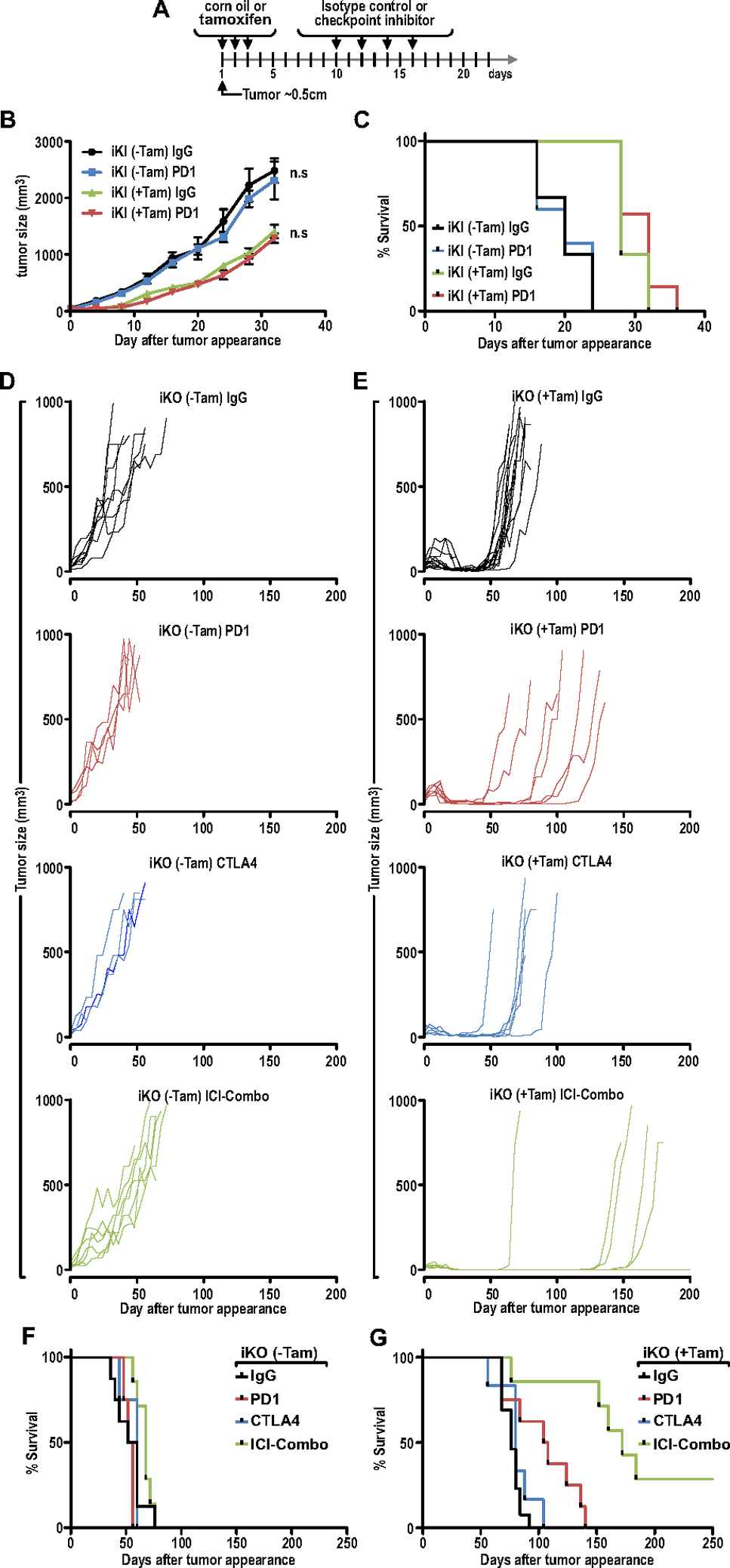Fig. 6.

Ablation of FIP200 enhanced the efficacy of immune checkpoint inhibitor therapy in non-responsive mammary tumors. (A) Treatment regimen for transplanted iKO or iKI cells into syngeneic FVB/N mice. Mice cohorts were treated with vehicle or tamoxifen to induce deletion when tumors reached ~50mm3. A week later, IgG control, anti-PD1, anti-CTLA4 or ICI-Combo therapy was administered (8mg/kg I.P every other day; 4 doses). (B) Tumor growth curves for iKI (±Tam) tumors treated with IgG or anti-PD1. (C) Survival plots for iKI (±Tam) tumors treated with IgG or anti-PD1. (iKI-Tam IgG; n=6, iKI-Tam PD1; n=5, iKI+Tam IgG; n=6, iKI+Tam PD1; n=7) (D) Tumor growth curves for iKO (−Tam) tumors treated with IgG, anti-PD1, anti-CTLA4 or ICI-Combo therapy (IgG; n=8, PD1; n=4, CTLA4; n=4, ICI-Combo; n=7). (E) Tumor growth and relapse curves for iKO (+Tam) tumors treated with IgG, anti-PD1, anti-CTLA4 or ICI-Combo therapy (IgG; n=14, PD1; n=7, CTLA4; n=6, ICI-Combo; n=7). (F–G) Survival plots for (F) iKO (−Tam) tumors and (G) iKO (+Tam) tumors treated with IgG, anti-PD1, anti-CTLA4 or ICI-Combo therapy.
